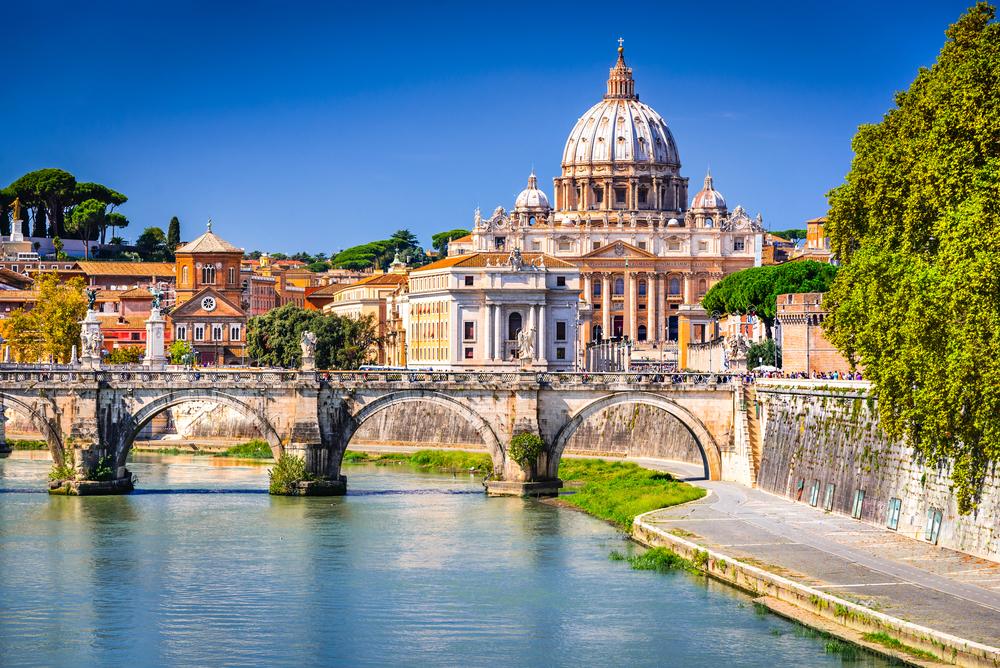In the midst of the chaos, on the roaring Piazza Venezia, stands a handsome man with white cuffs and an elegant pith helmet. His hand outstretched like Michel Angelo, his arm slightly bent and his hips bent: a Karajan in uniform. Mopeds rattle, cars roar and buses rattle – everyone drives at the same time and immediately the piazza is congested. At the latest, when the visitor has penetrated this chaos and reaches the wonderful Piazza Navon to finally sip a cappuccino, then he has arrived in Rome, the capital of Italy . The reassuring conclusion: Even in chaos, Rome is “first class”. The heart of antiquity is now open to all Rome fans.
Rome – What a city!
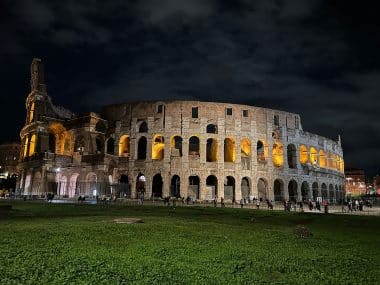
Anyone who comes to Rome for the first time is confronted with a wealth of contradictory impressions. Magnificent palaces, millennia-old architectural monuments, churches from the Renaissance and Baroque, but also modern commercial buildings are surrounded by noisy, smoking motor vehicle traffic. Busy life pulsates everywhere. But in the houses of worship and parks, time seems to stand still. A history of well over 2000 years has shaped the capital of Italy, and so there is sometimes a rugged juxtaposition of past and present. It is precisely this surprising diversity that makes the “Eternal City” so appealing and worth a visit, which should not only last a few days.
If you want to get more than just a fleeting impression of the former power of the empire, you should take your time. A lot of time.
Squares in Rome with lively compositions
Piazza del Popolo
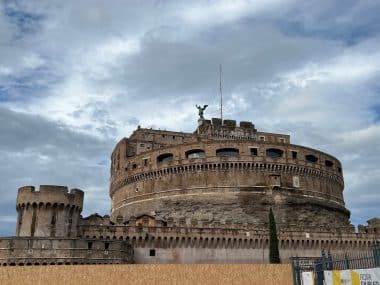
Before there were railways, Piazza del Popolo, with its Egyptian obelisk and twin churches, was the city’s reception salon for travelers from the north. The city gate already stood here in ancient times.
Campo de’ Fiori
Campo de’ Fiori can be reached via Via della Cancelleria. Located in the middle of the old town, it is one of the most atmospheric squares in Rome. In the morning, when the Roman flower market unfolds its full splendour, it is particularly popular. In the evening, people meet to go out and get together.
Piazza Navona
The most beautiful square in the city, perhaps even in the world, is Piazza Navona. In the midst of winding alleys and small squares decorated with fountains, Rome shows its most original side. It’s hard not to immediately succumb to the charm of this square with its impressive palace facades.

Tip: Spiritual Rome walks in these beautiful squares:
Just behind the Pantheon is the ivy-covered Piazza dei Caprettari, followed by Piazza della Minerva, the place where a small elephant carries an obelisk that is much too large. Last but not least, in Via dei Cestari, the pious heart beats faster. With bishop’s robes and dressy habits, the spiritual fashion makes its appearance.
The Pantheon
The old town district around the Pantheon is very lively and densely built up with churches, palaces and small squares. From the labyrinth of alleys you finally reach Piazza della Rotonda, a particularly beautiful square in the middle of which rises the massive Pantheon. Ingenious builders and constructors built the largest dome in the Old World. In its present form, the Pantheon was built at the beginning of the 2nd century under Emperor Hadrian.
Around Piazza di Spagna
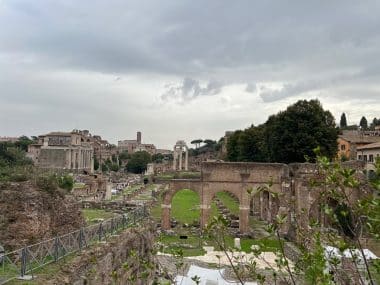
Piazza di Spagna is one of the most famous places in Rome. With its fountain, ochre-coloured houses and its azalea-lined staircase leading to the French church of Trinitá dei Monti, it is an ideal example of Baroque staging. The piazza is a lively place. Both during the day and at night, the air buzzes with the babble of people’s voices.
Behind the fountain rises the Spanish Steps. It is as wide as an entire street and as high as the neighboring houses. The year is 1726 – Rome is richer by an urban ensemble. Without a doubt, the Scalinata di Trinitá dei Monti is a must-see for every visitor to Rome.
The Spanish Steps cascade from the church down to the square. The architect could not do enough in the elegant play of steps and landings, of curves outwards and inwards, of terraces that invite you to linger halfway up. At sunset, you can enjoy a breathtaking view of the domes of Roman churches.
The fashion districts between the Spanish Steps, Via del Corso and Via del Tritone also exert a magical attraction. This is a kind of Bermuda Triangle, where visitors can get rid of their money in the stylish shopping spree in the countless boutiques. The offspring will also find their own clothing paradise. On the Via del Corso, the teenager gets everything from skates to jeans to feather boas. The adjacent streets Via Borgognona and Via Frattina form the most important shopping center in Rome with Via dei Condotti.
Galleries with fantastic views and impressive buildings
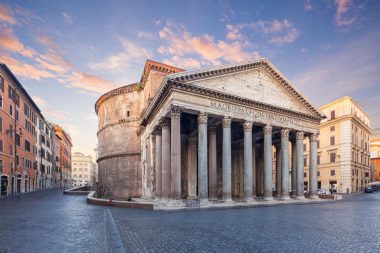
The Santi Trinitá dei Monti is one of the five French parish churches in Rome, built in the 16th century. Opposite, Viale Trinitá winds its way to the Pincio.
The Villa Medici was built at the end of the Renaissance. From 1630 to 1633, Galileo Galilei was under house arrest here. In the 17th century, the building became the property of the Medici.
The Pincio Hill and Villa Borghese: The Pincio Hill owes its name to the Pinci family, the owners of the site in the 14th century. It is a magical place overgrown with palm trees, pine trees and large oaks. If you cross Viale del Muro Torto from the Pincio, you will reach the largest park in Rome, Villa Borghese. Arguably the most beautiful park in Rome is a green oasis of peace and the arts. It is home to one of the most famous art collections in the world.
Ancient Rome – Capitoline Hill and Palatine Hill
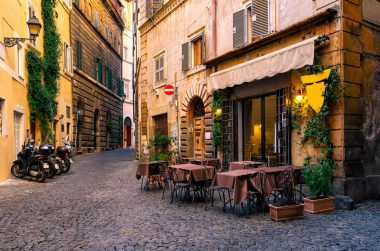
Where the parade mile of the Roman Forum leads to the Temple of Jupiter on the Capitoline Hill, you will find most of the remains of ancient Rome – as far as the eye can see from Vitorriano to the Colosseum. The mythological founding story tells of seven hills on which Rome was built. The Capitoline Hill and Palatine Hill are among the classic founding hills. The never-ending number of thermal baths, triumphal arches and forums invites you to take a journey into the past – a bygone era is brought to life. On Capitoline Hill, the oldest museum open to the public inspires with an extensive collection of antiquities. A copy of the philosophical emperor Marcus Aurelius greets visitors on the square in front of the palazzo.
The Colosseum
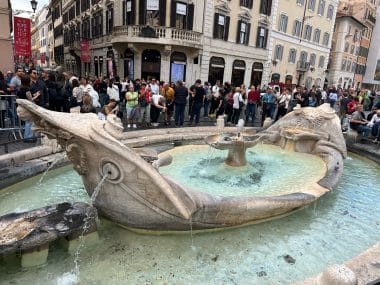
Emperor Vespasian began building the gigantic Colosseum in 72 AD. The capital of his empire was also to have the largest arena in the world.
The Colosseum, one of the main works of ancient Rome, is also one of the city’s most recognizable landmarks. “As long as the Colosseum is standing, Rome is also standing. If the Colosseum falls, then Rome falls too. When Rome falls, the world also passes away,” wrote the chronicler Venerabilis (673-735).
Castel Sant’Angelo and Angel’s Bridge
Here Rome shows its quiet side. In this area, you won’t find alleys or squares crowded with cafes and people. The style is sprawling baroque and represents the triumph of Christianity. Beyond the Angel’s Bridge, which was created by Bernini as access to St. Peter’s Basilica, rises majestically Castel Sant’Angelo, Hadrian’s Mausoleum. The castle retained its fortress character until modern times, it was the treasury of the popes and a prison. Today it is a museum. Especially at night, the baroque spectacle – illuminated – on the way to St. Peter’s Basilica is impressive.
Visit to the smallest state in the world: Vatican City
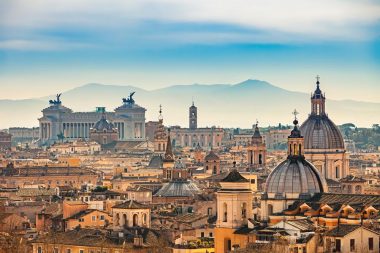
“All roads, as the saying goes, lead to Rome. However, in Rome itself, they lead across the Tiber to the Vatican. Access begins on Italian territory in Piazza Ponte Sant’ Angelo, which is opposite Castel Sant’Angelo on the other bank of the Tiber.
Crossing the Angel’s Bridge, visitors are greeted by the statues of Saints Peter and Paul and guided by ten statues of angels.
Much of Vatican City is taken up by St. Peter’s Basilica, the world’s largest basilica in the world’s smallest state. The triumphant forecourt is deeply impressive in its perfection. Since the pontificate of Julius II (1503-1513), the popes of Rome have accumulated countless art treasures in their palaces. Today, the Vatican Museum is one of the largest museums in the world.
At the sight of the Laocoön group entwined by sea snakes in the Musei Vaticani, tears flow, often from exhaustion. Soon the breath is taken away by beauty and crowds in the former papal private apartments, in Raphael’s Rooms and in the Sistine. However – the masses have a right to the Sistine Chapel.
The Tiber Island Travestere or “the Rome of the little people”
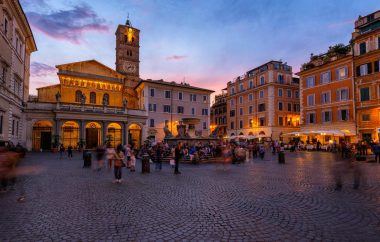
Trastevere, the largest village in Rome, inspires on the other side of the Tiber with secluded squares and babbling fountains. Here they still exist, the old, black-clad women who meet in the backyard for a gossip. The plaster of the houses peeled off, the Vespa parked in front of the front door, piebald cats on the walls taking a siesta – that’s what makes up the atmosphere of Travestere. Its inhabitants can often be seen in the midst of loud battles of words. Rome shows itself here completely unvarnished and without airs and graces.
In the meantime, the “Rome of the little people” has developed into a trendy and nightlife district. On the idyllic Tiber Island there are numerous bars and restaurants for every budget.
Facts about Rome
- Rome is the capital and largest city of Italy.
- The city was founded in the 8th century BC and has a rich history that dates back to ancient times.
- Rome was the center of the Roman Empire and played an important role in world history as the seat of the papacy and the Catholic Church.
- Rome is also known for its numerous historical monuments, including the Colosseum, the Pantheon, the Spanish Steps, the Sistine Chapel, and the Vatican.
- The city is a major tourist destination and receives millions of visitors from all over the world every year.
- The climate in Rome is Mediterranean and the city usually enjoys mild to warm weather throughout the year.
- Italian cuisine is famous worldwide and Rome is known for its pasta dishes, pizza and gelato.
- The city also has a rich art scene, with numerous museums, galleries and art exhibitions.
- Rome has a population of around 2.8 million people and is one of the most densely populated cities in Europe.
- The city has a well-developed public transport system consisting of buses, trams, subways, and trains.
The most famous museums in Rome
- Vatican Museums: One of the most recognizable attractions in Rome, the Vatican Museums are home to an incredible collection of artworks, including the Sistine Chapel, Raphael’s Rooms, and the Pinacoteca.
- Capitoline Museums: Located on Capitoline Hill, the Capitoline Museums are the oldest public museums in the world. They house a large collection of sculptures, paintings, coins and archaeological finds.
- Borghese Gallery: The Borghese Gallery is an art museum located in a magnificent villa in the park of Villa Borghese. It houses a collection of Renaissance and Baroque masterpieces, including works by Bernini, Caravaggio, and Raphael.
- National Museum of Rome: The National Museum of Rome is one of the most important archaeological museums in the world and displays an impressive collection of artifacts from Roman history, including sculptures, mosaics, and ancient jewelry.
- Palazzo Altemps: Palazzo Altemps is a museum housed in a Renaissance palace that displays a collection of sculptures from antiquity to the Renaissance.
- MAXXI: The MAXXI is a museum of contemporary art and architecture and houses a collection of works by modern artists from around the world.


